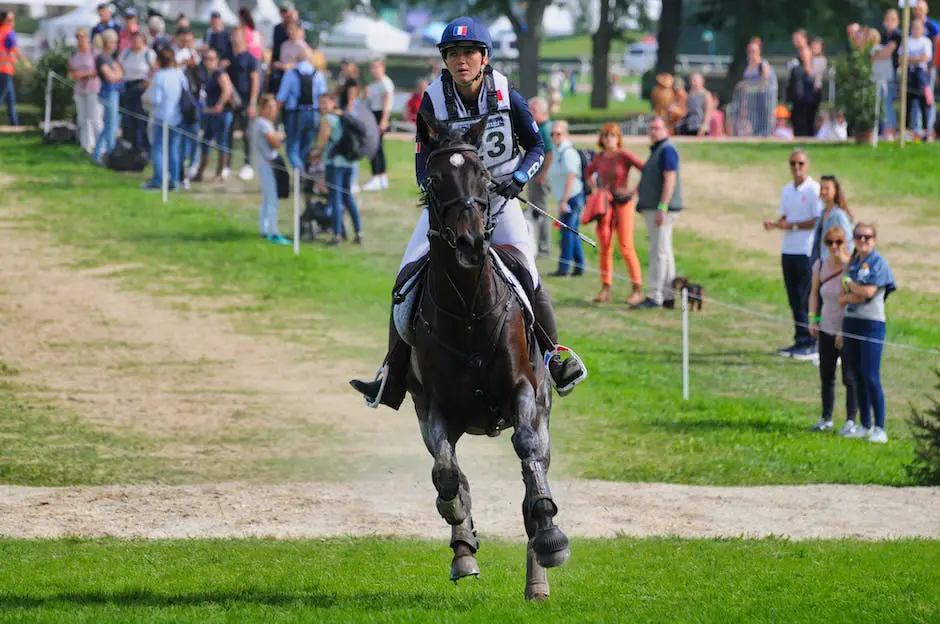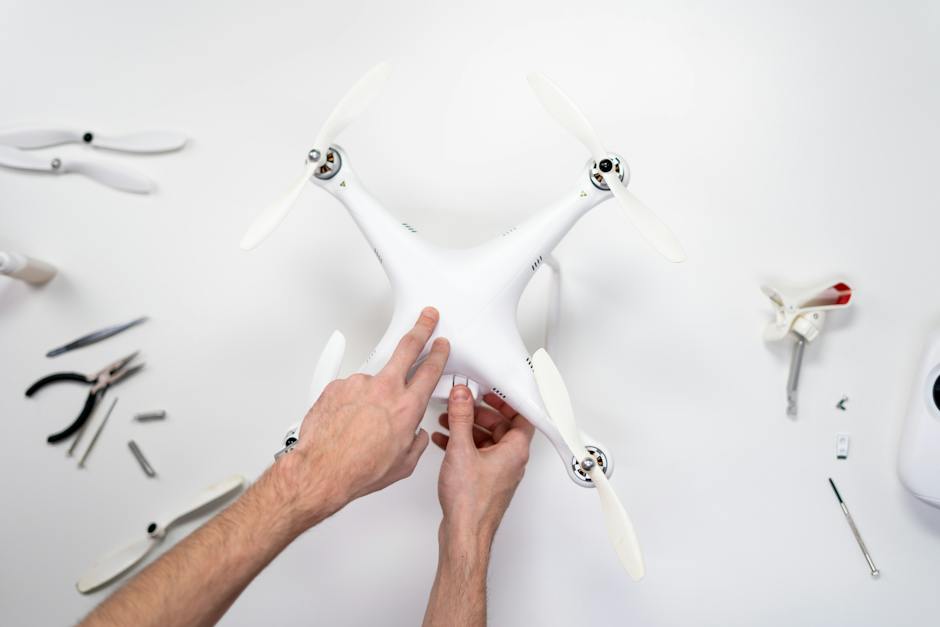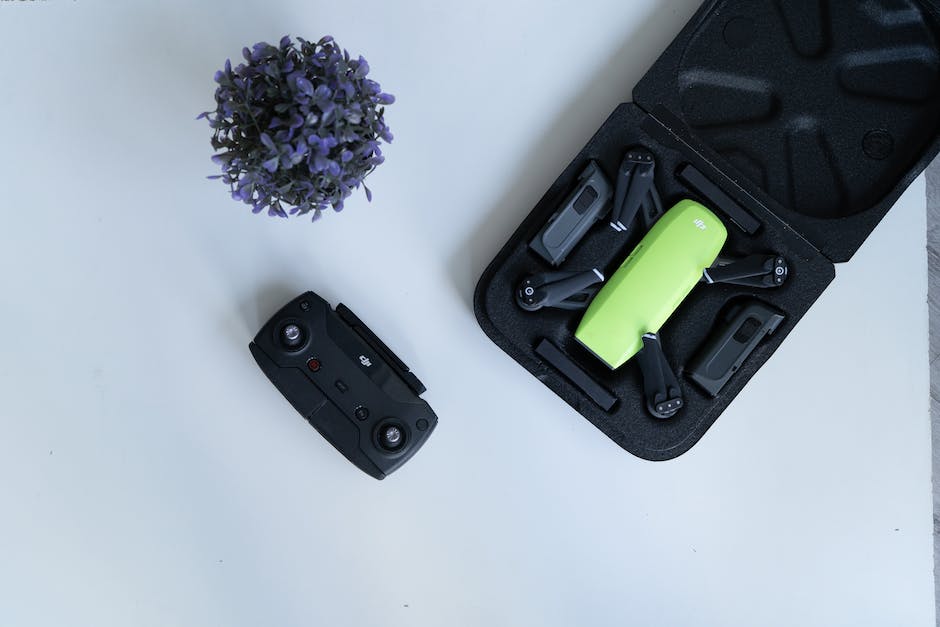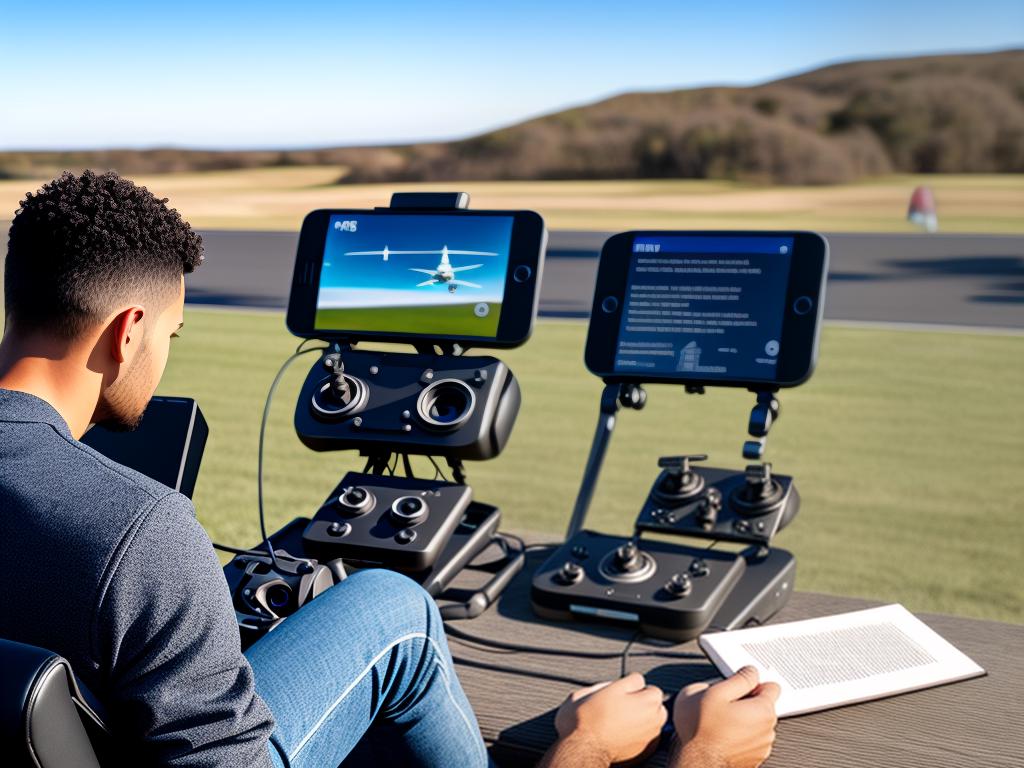Exploring the skies has captivated human imagination since time immemorial, and in the modern age, this fascination has taken a technological leap forward through First Person View (FPV) quadcopters and fixed-wing aircraft. These remarkable machines offer unique experiences influenced by their distinct flight mechanics—a dance of physics and aerodynamics that defines their operation. From the precise hovering of quadcopters to the graceful glides of fixed-wings, each platform invites hobbyists to master its particular nuances. The ensuing journey reveals the convergence of engineering and artistry, leading to an array of applications that extend from the adrenaline-fueled races to the meticulous tasks of aerial surveying. As we delve into this realm, we uncover the intricacies of pilot skill requirements, control systems, and the sheer joy of taking the controls of these UAVs. Whether you’re drawn to the skies out of curiosity or passion, the world of FPV quadcopters and fixed-wing drones promises a rewarding adventure in both personal skill development and technological discovery.
Flight Mechanics Comparison
Zooming Through The Skies: Flight Mechanics of FPV Quadcopters vs. Fixed-Wing Aircraft
Hey there, flying enthusiasts! Ever wonder why those zippy FPV (First Person View) quadcopters, with their four high-speed propellers, handle the skies differently than the sleek, winged aircraft that soar like majestic birds? Buckle up as we dive into the nuts and bolts of how these two fliers compare!
Lift-Off: Quadcopters vs. Airplanes
First off, let’s chat about lift. Fixed-wing aircraft, like airplanes, need to speed down a runway to get enough air flowing over their wings to lift off. It’s that shape of the wings – kind of like a teeter-totter in the sky – that really gives ’em the boost they need to rise.
On the flip side, FPV quadcopters don’t need a running start at all. They’ve got propellers on each of their four corners that spin super fast, pushing air down to shoot them straight up like a rocket. Pretty cool, right? Plus, they can just hang out in midair, something an airplane could never do without falling from the sky!
Steering and Stability: A Tale of Tails and Props
So how do they steer? Fixed-wing aircraft are masters of the glide, using their tail – that part at the back with the vertical and horizontal flaps – to adjust their path gracefully. They tilt and turn by angling those flaps, guiding the plane just where it needs to go.
FPV quadcopters are a different story. They don’t have tails; instead, they steer by changing the speed of their propellers. Speed up two props on one side, and whoosh, off it goes in the opposite direction. It’s like playing with those old balsa wood planes, but supercharged with a joystick!
Speed and Agility: Racecar vs. Sailboat
Fixed-wing aircraft are the sailboats of the sky – they need space to maneuver and can’t make tight turns at high speed. If you’re flying one, it’s all about gentle shifts and wide arcs.
Quadcopters? Think of them as sky racecars. They can flip, roll, and zip around obstacles that would leave an airplane scratching its head. It’s all thanks to their super responsive controls that let them change direction at the drop of a hat. Imagine darting through a forest, and you’ve got the idea of an FPV race!
A Hobby for All: Choose Your Style
Whether it’s the steady journey of a fixed-wing flight or the adrenaline rush of piloting an FPV quadcopter, the sky’s the limit when it comes to these hobbies. Each has its perks, and the fun really starts when you find the one that gives you that thrill of banking through the clouds or zooming through a challenging course.
Fly high, friends, and remember: no matter which you choose, the sky is your playground!

Photo by jonlampel on Unsplash
Use Cases and Applications
Exploring New Heights: Unique Uses for FPV Flyers
FPV quadcopters and fixed-wing aircraft aren’t just flying toys; they have some pretty cool uses that make this hobby fascinating and practical. Strap in, and let’s dive into some unique applications for our high-flying friends!
First up, we’ve got the adrenaline-packed world of drone racing. Picture this: a bunch of FPV drones zipping through a course with twists, turns and obstacles – it’s like a real-life video game! And the best part? Anyone can try it. Just grab an FPV quad, join a local racing league, and you’re off to the races.
Swooping over to another application, these flyers have a big role in filming and photography. Ever seen those breathtaking aerial shots in movies or on TV? Yep, that’s the handiwork of FPV quads and fixed-wing drones. They get the kind of high-flying, sweeping shots that no regular camera can, and they do it with style. For anyone who loves getting the perfect shot, this might be the most exciting use for a drone.
Let’s not forget about the benefits for farmers and landowners. Fixed-wing drones are superstars at mapping large areas, and can spot things like crop health and irrigation issues from way up high. It’s like having a bird’s-eye view of the land, which can save a lot of time and money. This might sound more like work than a hobby, but hey, who says you can’t enjoy flying and be helpful at the same time?
Speaking of helping out, FPV drones have been real heroes in search and rescue operations. When someone’s lost or hurt, every minute counts, and these drones can cover ground quickly, scanning vast areas without getting tired. Plus, they can fly in bad weather and rough terrain where people and vehicles can’t easily go. It’s amazing to see a hobby used for such important work.
For those who like to explore, consider this: drones are basically the ultimate tool for adventuring. Want to check out what’s inside that hard-to-reach cave? Send in an FPV quad. Curious about what’s over the next ridge but don’t want to hike another 10 miles? A fixed-wing drone can cover the distance and show you the view from up top. It’s like having a scout that can go anywhere, and all you need is a remote to see some hidden wonders of the world.
There you have it, a round-up of some unique and incredibly cool applications for FPV quadcopters and fixed-wing aircraft. Who knew that something that started out as a fun hobby could turn into a tool for art, agriculture, helping others, and exploring the unknown? Let the skies be your playground and your workplace, all in one. Keep flying high and finding new uses for these fantastic machines. Who knows what heights you’ll reach next?

Pilot Skill and Control Systems
Understanding the Time-Honed Craft of FPV Quadcopter Maneuvers
When it comes to the rich world of aerial exploration and racing, mastering the finer points of FPV (First Person View) quadcopter piloting opens up a realm of sky-high possibilities. But what sets FPV skills apart from those needed for fixed-wing flying?
Let’s dive deep. Grab a controller, put on the goggles, and prepare for takeoff – we’re exploring the exclusive piloting maneuvers of FPV quadcopter enthusiasts.
Acrobatic Precision: The Art of the Flip
Quadcopters are like acrobats of the air, flipping and rolling with the flick of a joystick. Unlike their fixed-wing cousins, quadcopters can perform jaw-dropping stunts mid-air, thanks to the freedom of movement in every axis. Pilots must develop a delicate touch, learning just how much thrust and tilt will perform the perfect somersault through an obstacle course.
Navigating the Z-axis: Hovering and Vertical Moves
In contrast to airplanes, quadcopters can hover in place, zip straight up or plunge like a stone (safely). This maneuverability requires understanding the Z-axis – the up and down of quadcopter flight. It’s a game-changer, enabling FPV flyers to navigate complex vertical spaces that fixed-wing aircraft would soar right past.
Wind Dance: The Delicate Balance in Unstable Conditions
Quadcopters may thrive in serene conditions, but throw in some gusty winds and it’s a whole new ballgame. These conditions demand real guts and a good grasp of the quadcopter’s response to fluctuating wind patterns. While fixed-wing pilots ride the breeze, FPV pilots must dance with it, adjusting to the continuous feedback loop between their quad and the unruly elements.
Reaction and Recovery: Safety in Sudden Shifts
Sudden shifts, be they obstacles popping up or unexpected gusts, demand quick reflexes. FPV pilots develop an instinctual rhythm, a sense of when to push their craft to its limits and when to back off for safety’s sake. It’s not just about handling the moment but recovering smoothly, ensuring that the quadcopter – and the pilot’s confidence – remains unshaken.
The Mind’s Eye: Internalizing the FPV Experience
Finally, perhaps the most unique skill for FPV quadcopter pilots is internalizing the first-person view itself. Immersion in the flight experience is about more than seeing; it’s about feeling the space around the craft, anticipating turns before they happen, and having an intimate spatial awareness. It’s like developing a sixth sense – something fixed-wing pilots might only brush in their broader, open sky canvasses.
These skills truly set FPV quadcopter enthusiasts apart. With practice, they craft a synergy between themselves and their flying machines, carving through the sky with precision and flair that fixed-wing pilots regard with respect and awe. And with no need for a runway, the sky’s not the limit – it’s the playground.
So, for those who dream not just of sailing through the clouds but also of soaring, swooping, and diving with the birds – an FPV quadcopter might just be the perfect co-pilot.

Maintenance and Upgradability
Maintaining and Upgrading: The Tinkerer’s Journey in FPV Quadcopters vs. Fixed-Wing Aircraft
When it comes to taking care of your flying machines, whether they’re First Person View (FPV) quadcopters or fixed-wing aircraft, there’s a lot to consider. For enthusiasts who delight in tweaking and improving their models, both types of RC aircraft offer unique challenges and rewards.
For FPV quadcopter buffs, the thrill of maintenance lies in the delicate electronics and the flexibility of design. Quadcopters are like building blocks. They come with a range of parts such as flight controllers, electronic speed controllers (ESCs), motors, and frames, which can all be upgraded or replaced to enhance performance or repair damage. It’s a bit like playing with high-tech Lego. One can customize their flying beast with LED lights, powerful batteries, or sharper cameras to capture stunning aerial footage.
In contrast, maintaining a fixed-wing aircraft often revolves around structural and aerodynamic tweaks. Wingspan adjustments or weight distribution can greatly affect how a plane glides through the sky. Repairs might include patching up the fuselage, fixing landing gear, or ensuring the integrity of the wings. These aircraft aren’t just about the electronics—they’re about understanding the physical principles that keep them aloft.
Upgrading a quadcopter often feels more like working with a computer. The focus might be on software updates, adjusting PID (Proportional, Integral, Derivative) settings, or calibrating sensors. A well-maintained quadcopter requires a good balance between its mechanical parts and its electronic brains.
In the realm of fixed-wing aircraft, upgrades might include installing a more efficient propeller, fine-tuning the engine, or integrating advanced telemetry systems to measure flight data. It’s a process that blends the joy of mechanics with the satisfaction of crafting something that soars effortlessly.
In terms of crash resilience, quadcopters offer a bit of an edge. Their smaller, more robust parts can take a hit and come back for more, often needing just minor repairs. Fixed-wing craft, while durable, can suffer more from a bad landing or mid-air mishap due to their larger rigid parts.
Ultimately, whichever path one follows in the hobby of RC flight, the experience of maintaining and upgrading is one of constant learning and gratification. It’s the joy of seeing your personalized craft take to the skies and knowing it’s yours, piece by piece and code by code. The skies are a canvas, and those who engage in these hobbies are the artists, forever tweaking their ever-evolving masterpieces.

Cost of Entry and Ongoing Expenses
Delving into the realm of remote control flying offers an accessible and exhilarating pastime for enthusiasts, and understanding the inevitable costs associated with starting and maintaining either an FPV (First-Person View) quadcopter or a fixed-wing aircraft helps in making an informed hobby choice.
Let’s break the bank—but not literally—and talk money, folks. First up, FPV quadcopters. These buzzing beauties can be more expensive to start with compared to their fixed-wing buddies. You’re looking at a few hundred bucks minimum for a decent setup. That includes the quadcopter, the FPV gear, and a controller. Don’t forget those extra batteries, because running out of juice is a no-go when you’re knee-deep in the fun zone!
Maintenance is like a box of chocolates with quadcopters; it can be sweet, or full of surprises. Crashes happen—especially when pulling off those fancy flips. While fixing a quad might be cheaper in the short run, if you love pushing limits like a daredevil, repairs might add up quick.
Now, for the fixed-wing flyers. Initially, these big birds are usually lighter on the wallet. You can snatch up a basic model without breaking the sweat of your hard-earned dollars. But, hold your horses! While they may not need repairs as often, when they do, it’s often a big deal. Imagine this—repairing or replacing a wing isn’t like slapping on a Band-Aid. Think higher costs for those major overhauls.
Both hobbies share a common ground when it comes to upgrades. It’s like hot-rod culture but for the sky. With quadcopters, adding high-end motors or snazzy cameras can notch up the price a bit. But for the fixed-wing aficionado, slapping on a more powerful engine or advanced electronics can be like launching your budget into orbit.
Now, RC pilots, let’s also factor in the hidden gem of our times—software and calibration. These aren’t your grandpappy’s model planes. Tweaking settings and calibrating your gear keeps you in the air and out of the repair shop, which, in the long run, might save you a pretty penny.
Let’s be real—both hobbies are more than a mere pastime. They’re like your pet projects that keep you up at night, and sure enough, they’ll have you spending more than you planned. But that’s what love’s about, isn’t it? The joy of each flight, each maneuver perfected, and each landing nailed is priceless.
So, aviators and drone pilots alike, choose your aircraft wisely, set that budget, and prepare to soar. Each path offers its unique thrills, spills, and chills, and there’s nothing quite like being the captain of your very own sky-high adventure.

The horizon of FPV quadcopters and fixed-wing aircraft is as vast as the skies they navigate. For enthusiasts who have traversed this comprehensive exploration, the insights gained are more than just guidelines—they are a testament to the dynamic nature of an evolving hobby. The thrill of mastering these machines, paired with the technicalities of their upkeep and the practicality of budgeting, form the backbone of a community rich in shared knowledge and experiences. Whether spiraling through the clouds with a nimble quadcopter or charting a course with a sleek fixed-wing, the journey is as rewarding as the destination. As technology continues to push the boundaries, so too will the pilots who breathe life into these flying marvels, fostering an enduring bond between humans and the art of flight.
Originally posted 2024-01-17 02:09:07.




